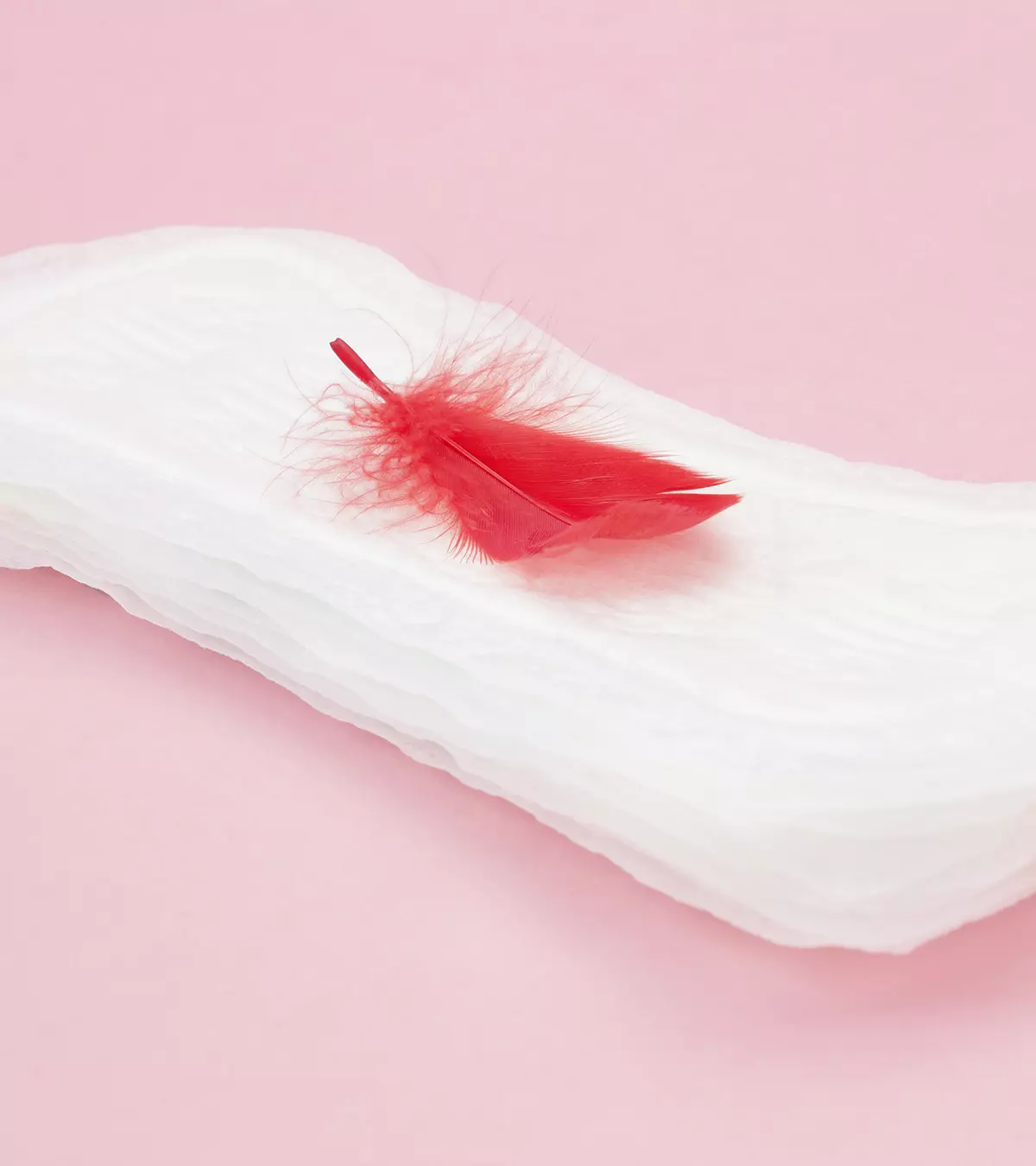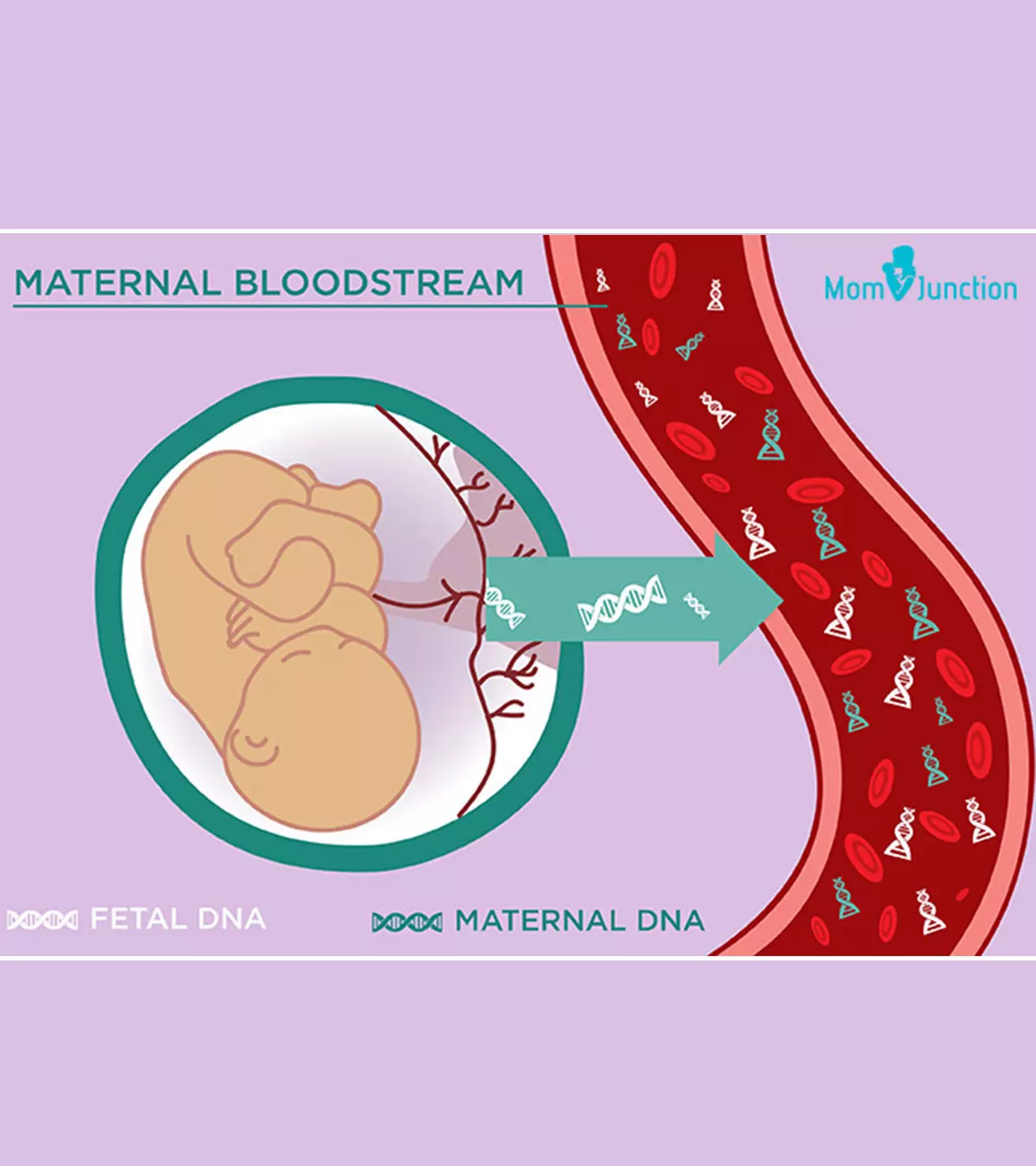
Image: Shutterstock
Dog, cat or other animal allergies may affect 10 to 20% of people worldwide and are public health concerns (1). Dog allergy in babies may be due to the fur the dogs shed and their dead skin, saliva, or urine. As a result, some parents may postpone adopting pets until their children turn older. However, if you already have a furry friend before your child is born or have adopted one for some reason, it is important to rule out the possibility of your baby being allergic to it. This post tells you what may cause dog allergy in your baby, its symptoms, treatment, and preventive measures.

Key Pointers
- Dog allergies can be caused by fur, dander, saliva, or urine.
- Any breed of dog can trigger allergies.
- Symptoms of dog allergies include watery, red eyes, runny nose, sneezing, itchy and red skin, hives, wheezing, asthma, and congestion.
- To treat dog allergies, prescribed antihistamine medications or nasal sprays can be used.
- Preventing allergies can be done by keeping the dog away from the baby, regularly cleaning carpets, washing the baby’s hands, and frequently bathing the dog.
Can Babies Be Allergic To Dogs?
Yes. Just like adults, even babies can be allergic to dogs and other animals. However, it is not necessary for all babies to be allergic.
Sometimes, rashes or skin allergies in babies can be symptoms of a reaction to another allergen, and you might mistakenly think they are due to an allergy to dogs.
According to the Centers for Disease Control and Prevention (CDC), 27.2% of children in 2025 had suffered one or more allergic conditions (11). Therefore, seeing a pediatrician to confirm the exact cause of the allergy is good.
What Causes Dog Allergies In Babies?

The human immune system is designed to fight bacteria, viruses, and other pathogens (2). However, immunity may not differentiate between pathogens and agents like a dog’s dander (dead skin), fur (pet hair), saliva, and urine in some individuals. The body takes them to be harmful foreign bodies and keeps up a fight i.e., called immune response, thus causing an allergic reaction. Mostly, it is an acute type of reaction, which means it shows immediate response, symptoms, and signs.
There is no variety of dog, which can be hypoallergenic or non-allergic. Any breed of dog can be allergic. The following are some triggers of dog allergies in humans.
- It is believed that a dog’s fur causes dog allergies in babies. But fur alone is not responsible for it. The fur could contain proteins from pet dander, saliva, and urine that can also lead to allergies.
- The fur can also carry other common allergens like dust and pollen (2). Each breed of dog has a different level of allergy-causing potential, but even hairless dogs might cause infant dog allergies (3).
- The dog allergens are present on the furniture, floor, walls, and other surfaces of the house. They easily get attached to surfaces like curtains, upholstery, etc. and do not lose their potential to cause allergy for a long time.
- Dog allergens could be present in houses where there are no pets since people can carry dog allergen on their clothing. These allergens spread in the air when the dog is groomed, patted, etc.
- The allergens that are settled on surfaces might stir up again while dusting and vacuuming. Once the allergens are suspended in the air, they tend to remain there, thus causing symptoms for a long time (2).

Studies show that exposure to two or more dogs within the first year of life may reduce the risk of atopyiA genetic tendency to develop allergic conditions, such as asthma, eczema, and allergic rhinitis and seratopy, reducing the prevalence of any positive allergen-specific IgE to 17.9% by the age of six (12). Continuous exposure to a dog’s allergensiA substance that triggers the immune system and induces an allergic reaction. might lead to allergic sensitivity and progress to a full-fledged allergic reaction. It might exhibit allergic rhinitis or asthma (1).
 Quick fact
Quick factHow Can You Tell If A Baby Is Allergic To Dogs?
If your baby exhibits one or more of the following symptoms after exposure to a dog or dog allergen in the air, then it might be dog allergy (5).
- Itchy, watery, or red eyes
- Runny nose
- Sneezing
- Nasal congestion
- Itchy skin or eczemaiA skin condition that causes inflammation, redness, itching, and irritation
- Redness of skin
- HivesiSkin rash characterized by itchiness, commonly caused by allergenic foods or medications. or bumps on the skin
- Wheezing
- Labored breathing
- Respiratory issues such as asthma
 Quick fact
Quick factWhat Is The Treatment For Dog Allergies In Babies?
In any case of allergy, the best treatment is prevention of the trigger (allergen). In this case, the trigger is a dog. However, if you do not want to part with your pets, talk to a healthcare provider for a way to manage the allergy in your baby.
The doctor may suggest one or more of the following (5).
- Antihistamine medicines might be prescribed to treat allergic reactions in babies. However, avoid giving any over-the-counter (OTC) drugs. The doctor will decide the dosage of the medicine after taking into account the baby’s age, body weight, and severity of symptoms.
- Steroid nasal sprays, antihistamines or other oral medications are usually used for nasal symptoms such as a running or a blocked nose. Antihistamines are also used for eye symptoms such as watery, itchy, or red eye.
- Immunotherapy is usually used for grown-ups. In this procedure, the individual is administered shots of low amounts of allergens over a long period. It could eventually reduce the symptoms of dog allergy. Immunotherapy is usually not used for babies (7). Moreover, immunotherapy (allergy shots) may also lead to severe reactions such as anaphylaxis in rare cases.
How To Prevent Dog Allergies In Infants?

While dealing with allergies might be challenging, it is crucial to prioritize prevention. If your baby is exhibiting allergic responses due to dog allergy, it might be best to temporarily rehome the pet to reduce symptoms (6).
Susan, a mother of two young boys, documents her family’s encounters with allergies, “Every doctor we visited recommended that we find a new home for him (their dog). One allergist, in particular, would not perform a skin test on our son until we no longer owned a dog. She said it would take three years to fully rid our home of a dog’s allergens. This was not easy to digest (i). When preventing exposure to the dog is not possible, the following steps might help prevent exacerbationiThe process that makes an illness go from bad to worse, requiring quick and prompt action. of the symptoms (5).
- Limit the dog’s presence to only one room in the house. If possible, maintain a dedicated kennel or room for the dog outside the house.
- Keep the dog away from the baby’s bedroom or any other room where the baby spends most of their time.
- Use dust miteiInsect-like organisms feeding on dead skin cells, whose protein, when inhaled, may trigger an allergic reaction. protectors for the baby’s mattress and sheet.
 Quick tip
Quick tip- Replace upholstery in the house with easily washable materials.
- Remove the carpets from the house if possible. If that is not possible, then replace the regular carpet with a low pile carpet and steam dry it regularly.
- Wash your baby’s hands with soap and water every time they touch the dog.
- Use a double or a microfilter bag vacuum cleaner.
- Use high-efficiency particulate air (HEPA) cleaners to remove the allergens from the air.
- Giving your dog a bath at least once a week can reduce airborne dog allergen.

Frequently Asked Questions
1. Is allergy to dogs genetic?
Genetic predisposition plays a significant role in the likelihood of developing dog allergies. Most of the allergies have genetic predisposal. Similarly, dog allergies can also run in families. However, if you are allergic to a dog, it is not necessary the baby will be allergic too. Some babies are not allergic to dogs, despite having at least one parent with a dog allergy. However, it is to be noted that each child’s immune system is unique, and not all children will inherit this predisposition. It is essential to monitor symptoms and consult a healthcare provider for personalized advice.
2. Can babies grow out of dog allergies?
Some babies outgrow the allergy, while some may not (8). Studies show that keeping a dog in the early years of the baby reduces the chances of developing an allergy later in life (9).
3. What age do dog allergies start?
There is no specific age for the allergies to begin; nevertheless, a study reveals that early exposure to pets (such as dogs and cats) may increase the likelihood of developing an allergy to them in early childhood (10). However, a large-scale research is needed to prove this association.
If you have pets such as dogs, you know how important they are in your family. Pets are friendly, and your babies would love to be around them. However, sometimes certain allergens and immune system reactions could cause dog allergies in infants. Skin irritation, eye irritation (red eyes), breathing difficulties, etc., could indicate that your baby might have a dog allergy. Though the best way to prevent infant dog allergies is to keep your baby away from the dog, it is ideal to consult a healthcare provider to decipher the allergy trigger and ways to manage it.
Infographic: How Can You Tell If A Baby Is Allergic To Dogs?
Dogs are adorable and loving creatures that make everyone happy around them. But if your baby shows signs of discomfort or uneasiness after being around a dog, it might be a sign of dog allergy. Although its symptoms are similar to those of a typical allergy, we suggest you refer it to the doctor. In the following infographic, you will find a list of symptoms associated with dog allergy. Illustration: Momjunction Design Team
Illustration: Dog Allergy In Babies: Symptoms Causes And Treatment

Image: Stable Diffusion/MomJunction Design Team
Are you worried your child may be allergic to dogs? Learn how to identify the signs and symptoms of a dog allergy and get the answers you need.
Personal Experience: Source
MomJunction articles include first-hand experiences to provide you with better insights through real-life narratives. Here are the sources of personal accounts referenced in this article.
i. Allergies, Asthma, Eczema and a Dog.https://thefoodallergychronicles.wordpress.com/2012/01/13/allergies-asthma-eczema-and-a-dog/
References
1. Sanny K. Chan and Donald Y. M. Leung,Dog and Cat Allergies: Current State of Diagnostic Approaches and Challenges; Allergy, Asthma & Immunology Research
2. Pet Allergy: Are You Allergic to Dogs or Cats?; Asthma and Allergy Foundation of America
3. Pet Allergens; National Institute of Environmental Health Sciences
4. Pet Allergy; AllergyUK
5. Pet Allergy; American Academy of Allergy, Asthma & Immunology
6. Pets, Dog and Cat Allergies; ACAAI Public Website
7. When Pets Are the Problem; American Academy of Pediatrics
8. Coping with allergies; San Antonio government
9. Bill Hesselmaret al,Pet-keeping in early life reduces the risk of allergy in a dose-dependent fashion; U.S. National Library of Medicine
10. Kaisa Pyrhönen et al., Dog and cat exposure and respective pet allergy in early childhood; U.S. National Library of Medicine.
11. Diagnosed Allergic Conditions in Children Aged 0–17 Years: United States, 2025; CDC/National Center for Health Statistics
12. Dennis R. Ownby et al.; Exposure to Dogs and Cats in the First Year of Life and Risk of Allergic Sensitization at 6 to 7 Years of Age; American Medical Association.
Community Experiences
Join the conversation and become a part of our nurturing community! Share your stories, experiences, and insights to connect with fellow parents.
Read full bio of Dr. Surabhi Gupta
Read full bio of Dr. Ritika Shah
Read full bio of Rohit Garoo
Read full bio of Shinta Liz Sunny


















